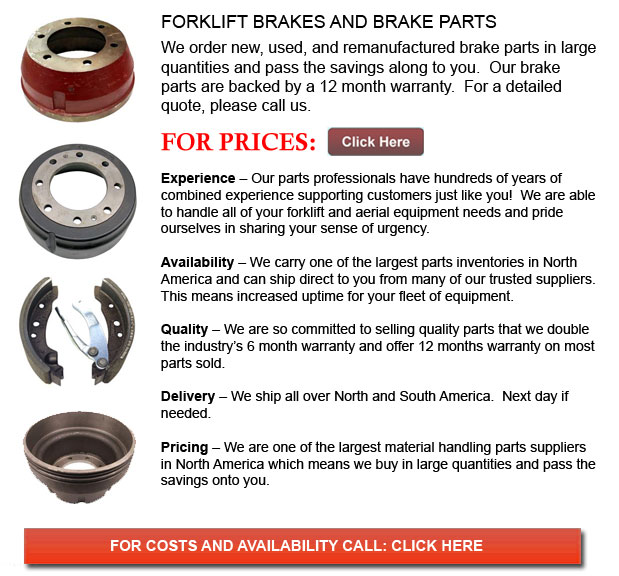
Forklift Brakes - A brake in which the friction is supplied by a set of brake shoes or brake pads which press against a rotating drum unit called a brake drum. There are several particular differences among brake drum types. A "brake drum" is normally the explanation provided if shoes press on the inner outside of the drum. A "clasp brake" is the term used to be able to describe whenever shoes press against the exterior of the drum. Another kind of brake, called a "band brake" makes use of a flexible belt or band to wrap around the exterior of the drum. Whenever the drum is pinched in between two shoes, it can be known as a "pinch brake drum." Like a standard disc brake, these types of brakes are rather rare.
Previous to 1955, early brake drums needed consistent adjustment periodically so as to compensate for drum and shoe wear. Long brake pedal or "Low pedal" travel is the hazardous outcome if adjustments are not executed sufficiently. The vehicle can become hazardous and the brakes could become ineffective when low pedal is combined together with brake fade.
There are various Self Adjusting Brake Systems presented, and they could be categorized within two main types, RAD and RAI. RAI systems have in-built tools that avoid the systems to be able to recover when the brake is overheating. The most popular RAI manufacturers are Bosch, AP, Bendix and Lucas. The most well-known RAD systems comprise AP, Bendix, Ford recovery systems and Volkswagen, VAG.
Self-adjusting brakes usually make use of a tool that engages only whenever the motor vehicle is being stopped from reverse motion. This stopping method is acceptable for use where all wheels use brake drums. Nearly all vehicles today use disc brakes on the front wheels. By functioning only in reverse it is less likely that the brakes will be adjusted while hot and the brake drums are expanded. If adjusted while hot, "dragging brakes" can take place, which raises fuel intake and accelerates wear. A ratchet tool which becomes engaged as the hand brake is set is one more way the self repositioning brakes can work. This means is just appropriate in functions where rear brake drums are used. If the emergency or parking brake actuator lever goes beyond a particular amount of travel, the ratchet developments an adjuster screw and the brake shoes move toward the drum.
There is a manual adjustment knob situated at the bottom of the drum. It is usually adjusted through a hole on the other side of the wheel and this involves getting beneath the forklift utilizing a flathead screwdriver. It is of utmost importance to be able to move the click wheel correctly and modify each and every wheel evenly. If uneven adjustment occurs, the vehicle could pull to one side during heavy braking. The most efficient way in order to guarantee this tiresome job is completed safely is to either lift every wheel off the ground and spin it by hand while measuring how much force it takes and feeling if the shoes are dragging, or give everyeach and every one the exact amount of manual clicks and then perform a road test.
![]() Click to Download the pdf
Click to Download the pdf
Forklift Parts
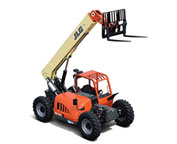
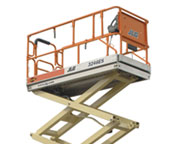
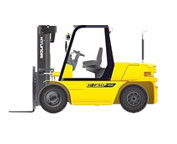
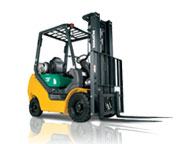
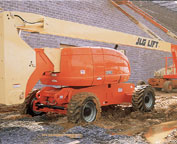
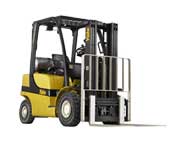
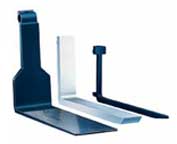
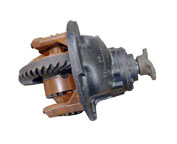
Lift Parts Express
TOLL FREE: 1-888-695-7994
forkliftpartsnewbrunswick.com
Email Us
About Us


